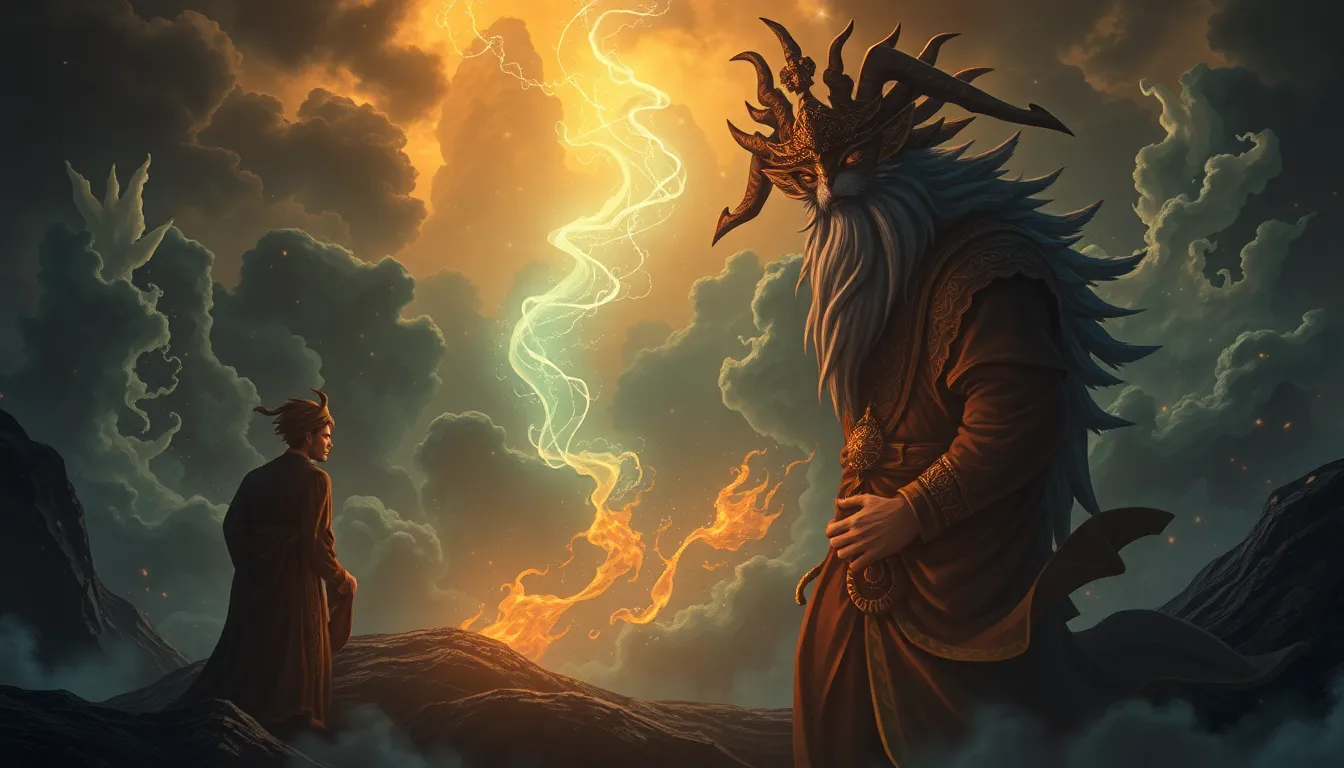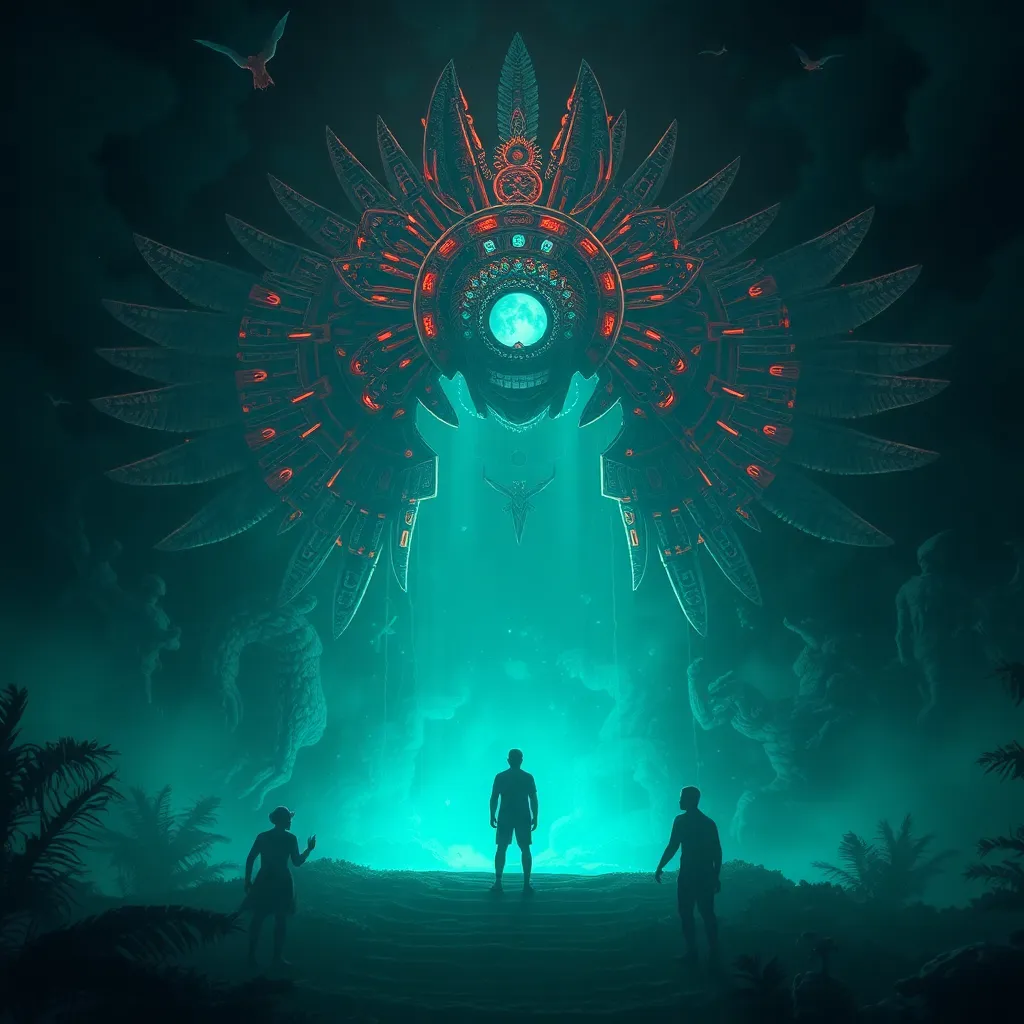The Legend of the Simurgh and the King’s Son: A Tale of Wisdom and Courage
I. Introduction
The Simurgh, a magnificent creature in Persian mythology, embodies both wisdom and strength. This mythical bird is revered not only for its majestic presence but also for its profound knowledge and nurturing spirit. Central to this tale is the King’s Son, a character who embarks on a transformative journey fueled by ambition and a thirst for wisdom. The story of the Simurgh and the King’s Son eloquently conveys themes of wisdom and courage, illustrating how personal growth often arises from the challenges we face and the mentors we encounter.
II. The Origins of the Simurgh
The Simurgh is described as a giant, benevolent bird with a colorful plumage, often depicted as having the head of a dog and the claws of a lion. Its mythical attributes include the ability to heal and the wisdom of ages, making it a symbol of divine knowledge. In Persian literature, the Simurgh is an enduring figure, appearing in various texts, notably in the Shahnameh by Ferdowsi, where it is portrayed as a guardian and a guide.
- Guardian: The Simurgh often protects those in need, acting as a guardian spirit.
- Teacher: It imparts wisdom to those who seek its counsel, emphasizing the importance of knowledge.
- Symbol of Rebirth: The Simurgh is associated with renewal and the cycles of life.
The cultural context of the Simurgh highlights its significance in Persian mythology as a protector and teacher, embodying the ideals of wisdom that are crucial for personal and societal harmony.
III. The King’s Son: A Portrait of Innocence and Ambition
The King’s Son is introduced as a young man of royal lineage, raised in the comforts of the palace but yearning for something greater. His initial character traits include innocence and ambition, traits that set the stage for his transformation. Despite his privileged upbringing, he feels a deep emptiness and a desire to prove himself beyond the palace walls.
The turning point in his story occurs when he realizes that true greatness comes not from royal status, but from wisdom and courage. This realization propels him on a quest to seek the Simurgh, a journey that promises to change his life forever.
IV. The Quest for Wisdom
The call to adventure arises when the King’s Son decides to leave his luxurious life behind. He sets out on a perilous journey to find the Simurgh, driven by a desire to acquire wisdom and understanding. This decision marks the beginning of a transformative quest.
Throughout his journey, he faces numerous challenges:
- Physical Obstacles: Treacherous terrains and harsh weather test his resilience.
- Moral Dilemmas: He encounters situations that challenge his values and beliefs.
- Personal Fears: The journey forces him to confront his insecurities and doubts.
During his travels, the King’s Son meets various characters who impart valuable lessons. Each encounter serves as a stepping stone, teaching him about humility, perseverance, and the essence of true leadership.
V. The Meeting with the Simurgh
After enduring numerous trials, the King’s Son finally reaches the realm of the Simurgh, a place of ethereal beauty and tranquility. The Simurgh’s realm is depicted as a celestial garden filled with vibrant flowers and melodious sounds, a stark contrast to the challenges faced on his journey.
The significance of the encounter between the King’s Son and the Simurgh cannot be understated. This meeting symbolizes the culmination of his quest and the beginning of his transformation. The Simurgh, with its vast wisdom, imparts crucial lessons about:
- Courage: The importance of facing one’s fears and taking risks.
- Wisdom: Understanding that true knowledge comes from experience and empathy.
- Self-Discovery: The journey to understanding oneself is as important as the destination.
VI. The Transformation of the King’s Son
The wisdom gained from the Simurgh profoundly changes the King’s Son. He emerges from the encounter not only with newfound knowledge but also with a strengthened sense of courage and leadership skills. The lessons he learns help him to rethink his priorities and approach to life.
This transformation is evident in his personal journey as he begins to understand the depth of responsibility that comes with leadership. The King’s Son learns to lead with compassion, wisdom, and an unwavering commitment to his people.
VII. The Return Home: Applying Wisdom and Courage
Upon his return to the kingdom, the King’s Son faces the challenges of re-entry into royal life. He is met with skepticism from those who once viewed him as merely a privileged youth. However, armed with the lessons learned from the Simurgh, he is determined to prove himself.
Upon his return, he encounters:
- Resistance: Some courtiers doubt his capabilities, questioning his experiences.
- Challenges in Leadership: He faces decisions that test his newfound wisdom and courage.
- Opportunities for Change: He sees ways to improve the kingdom and uplift his people.
Through these challenges, he applies the lessons learned from the Simurgh, transforming his kingdom with wisdom and courage as guiding principles.
VIII. Conclusion
The tale of the Simurgh and the King’s Son reflects enduring themes of wisdom and courage, illustrating how personal growth can arise from the trials we face and the mentors who guide us. In contemporary society, the relevance of this legend resonates strongly, emphasizing the importance of mentorship, self-discovery, and the courage to embark on our own journeys.
Ultimately, the story serves as a reminder that wisdom is not merely about knowledge but about the application of that knowledge in service of others. It encourages us to seek guidance, embrace our challenges, and strive for personal growth, echoing the timeless importance of the journey toward becoming our best selves.




